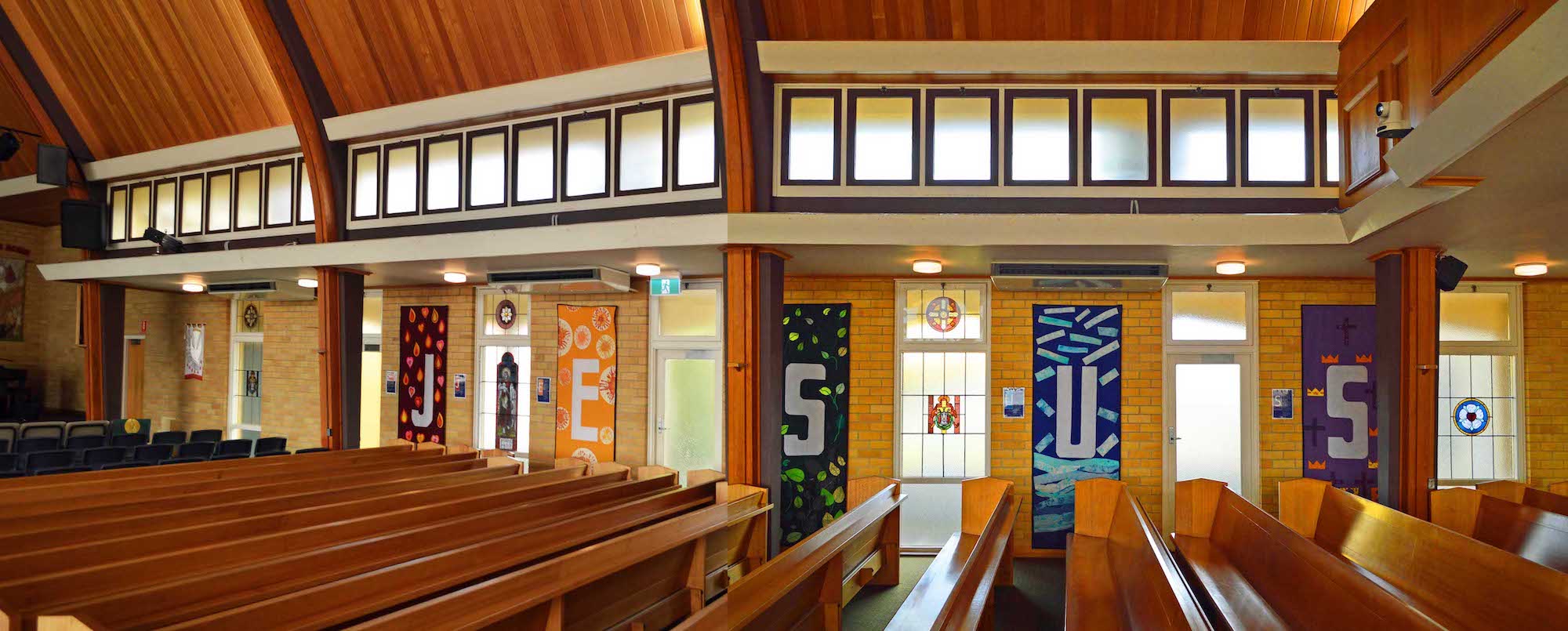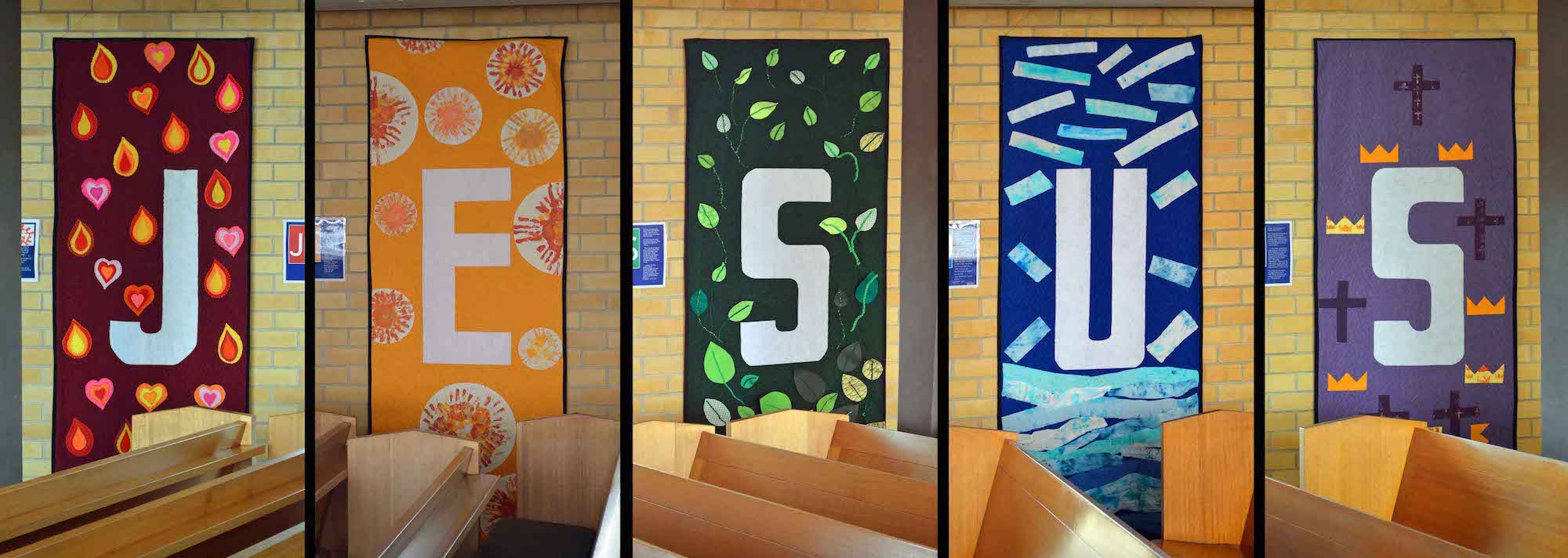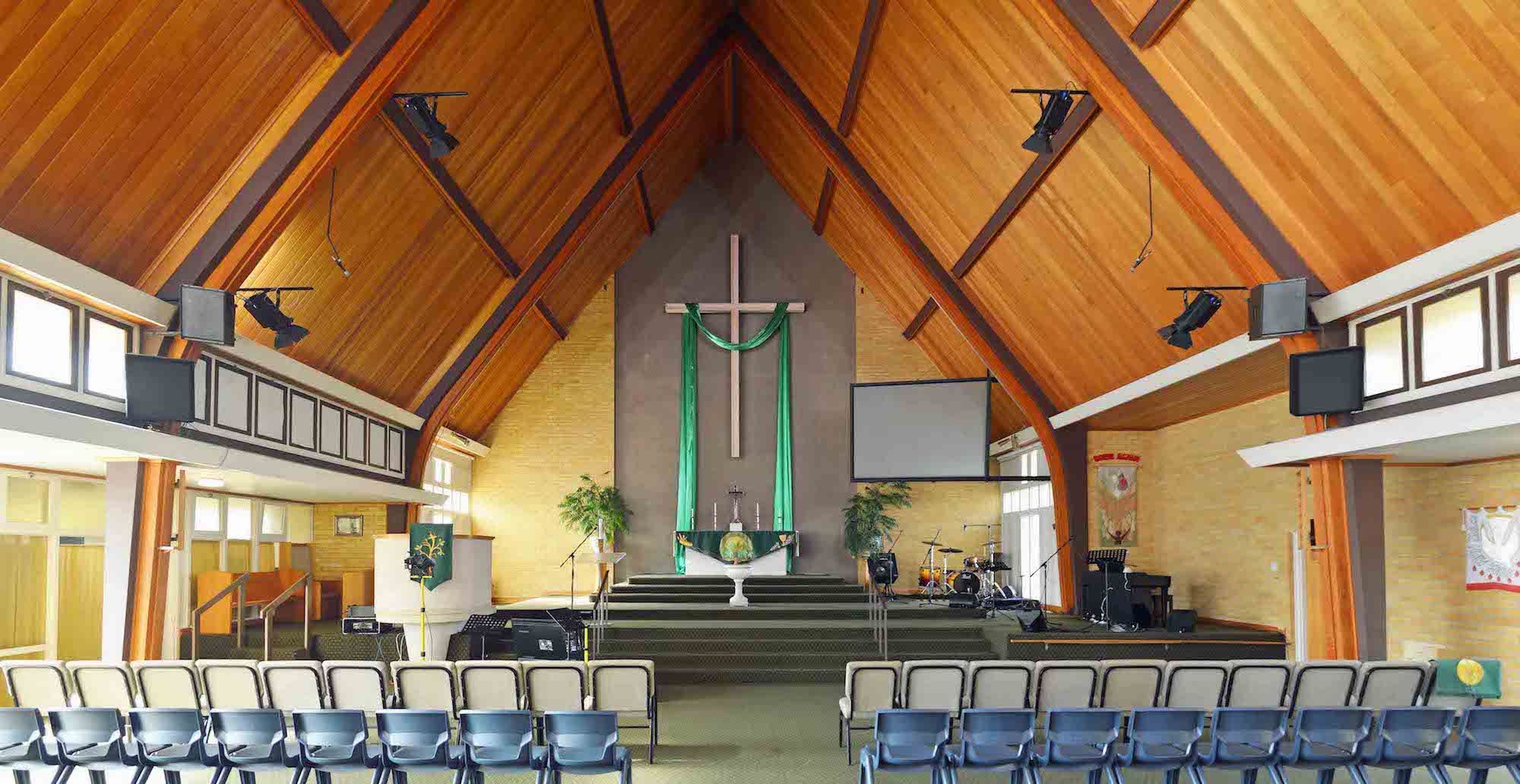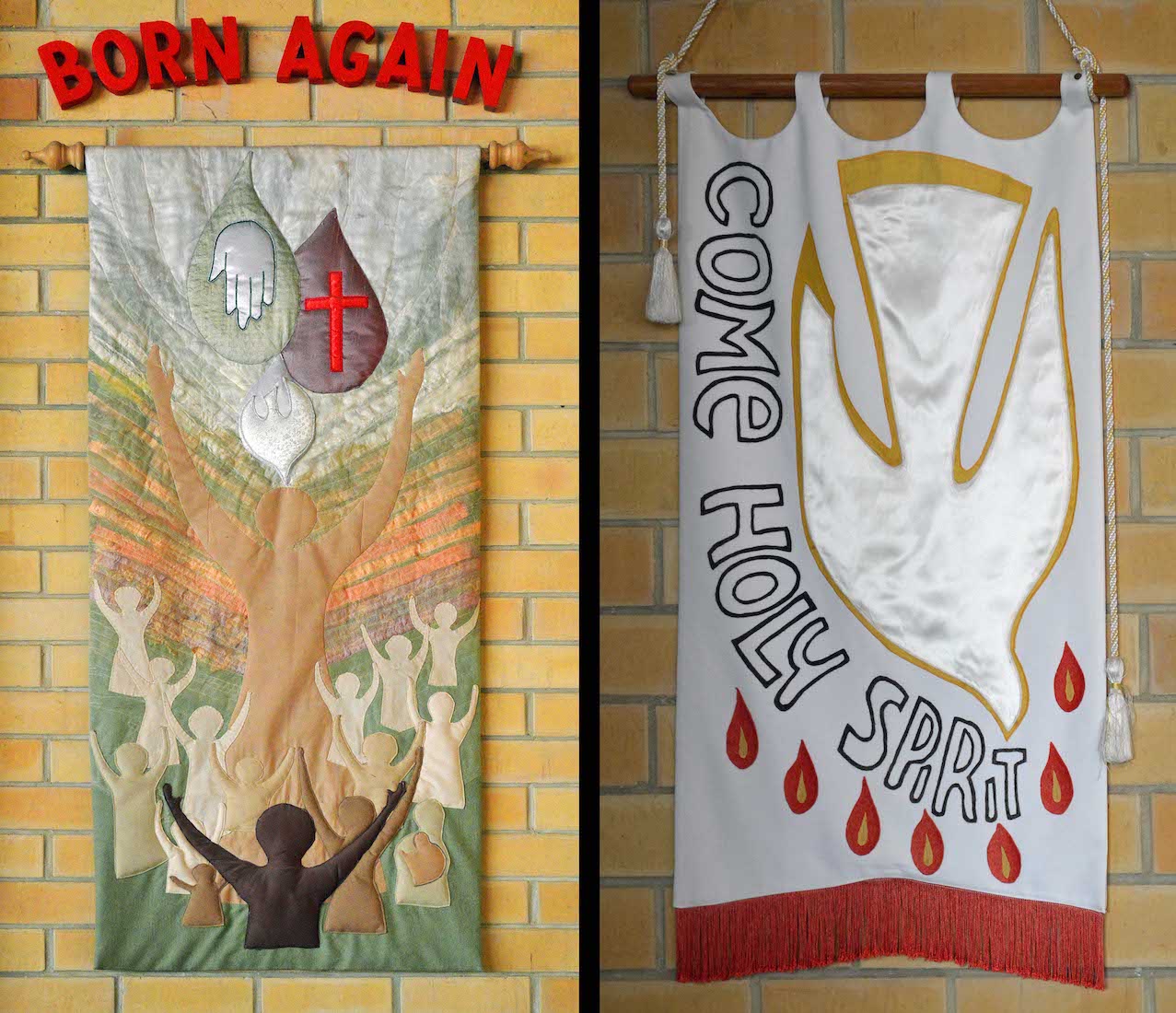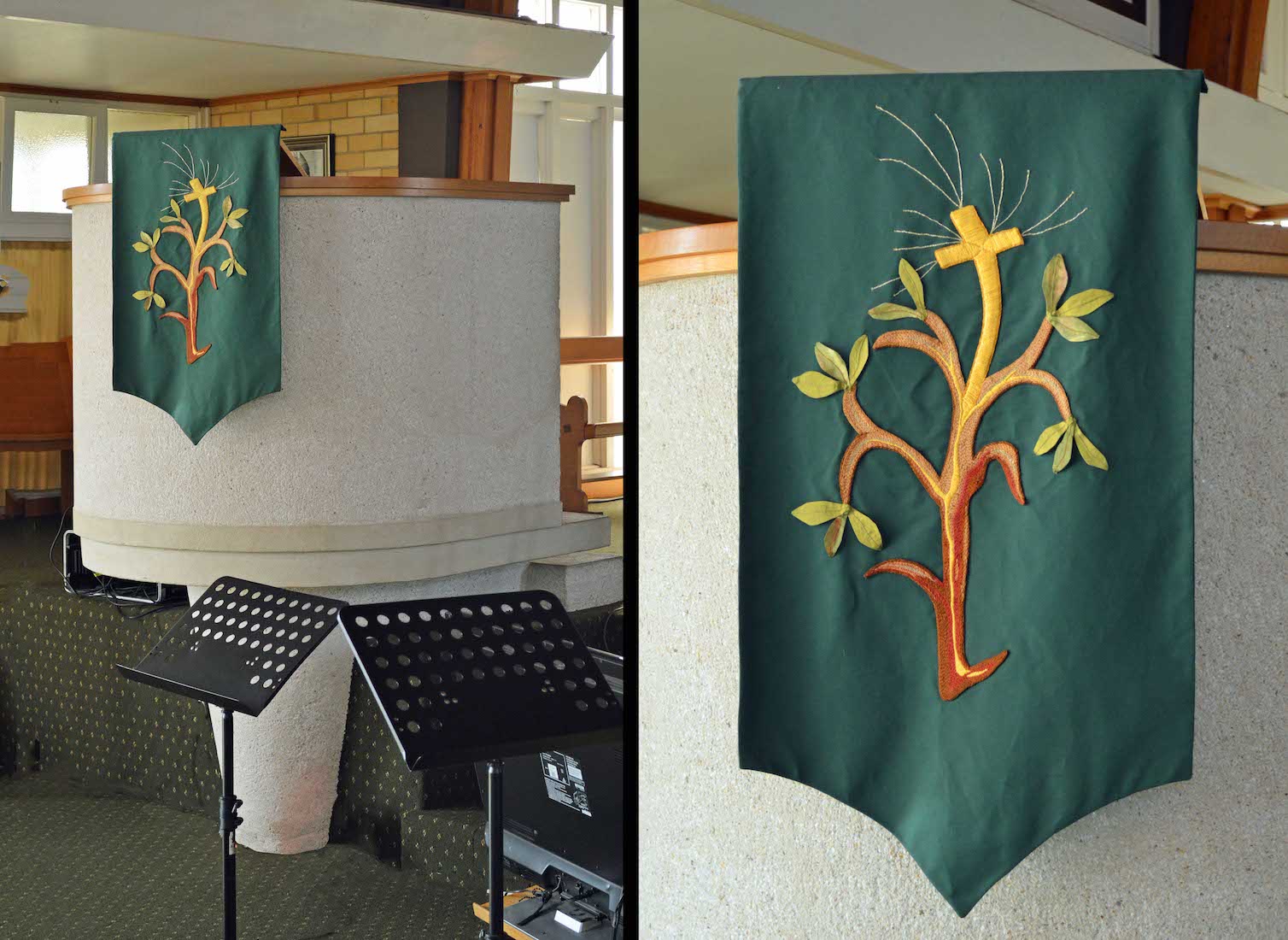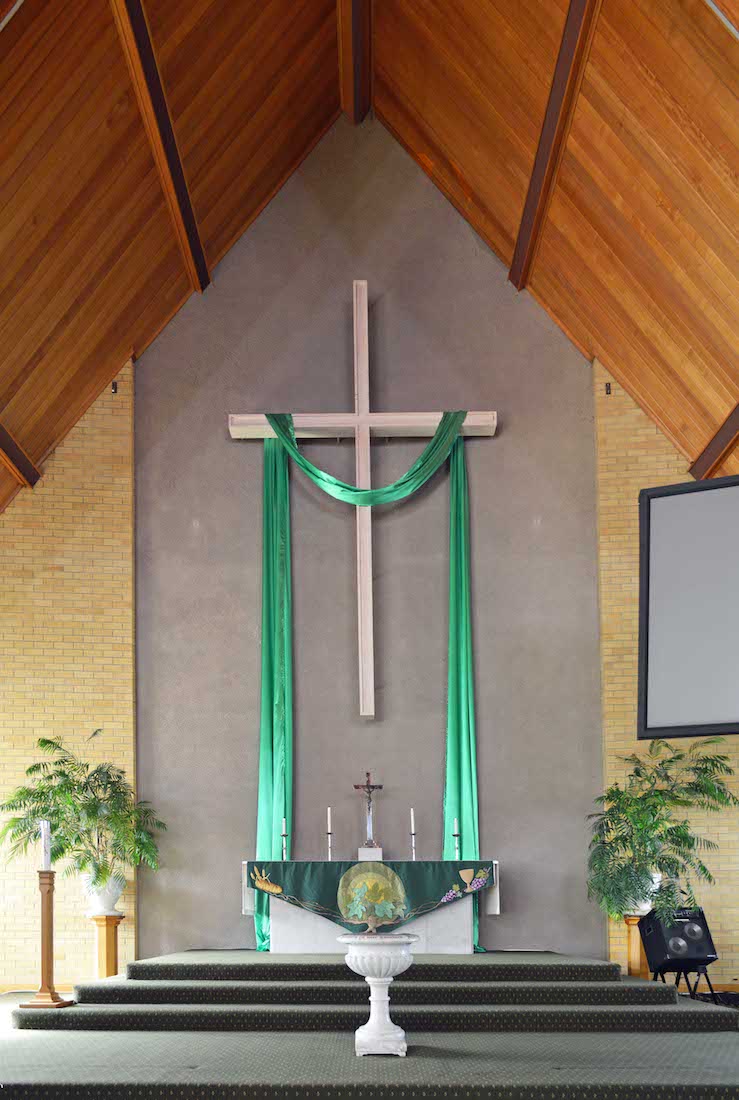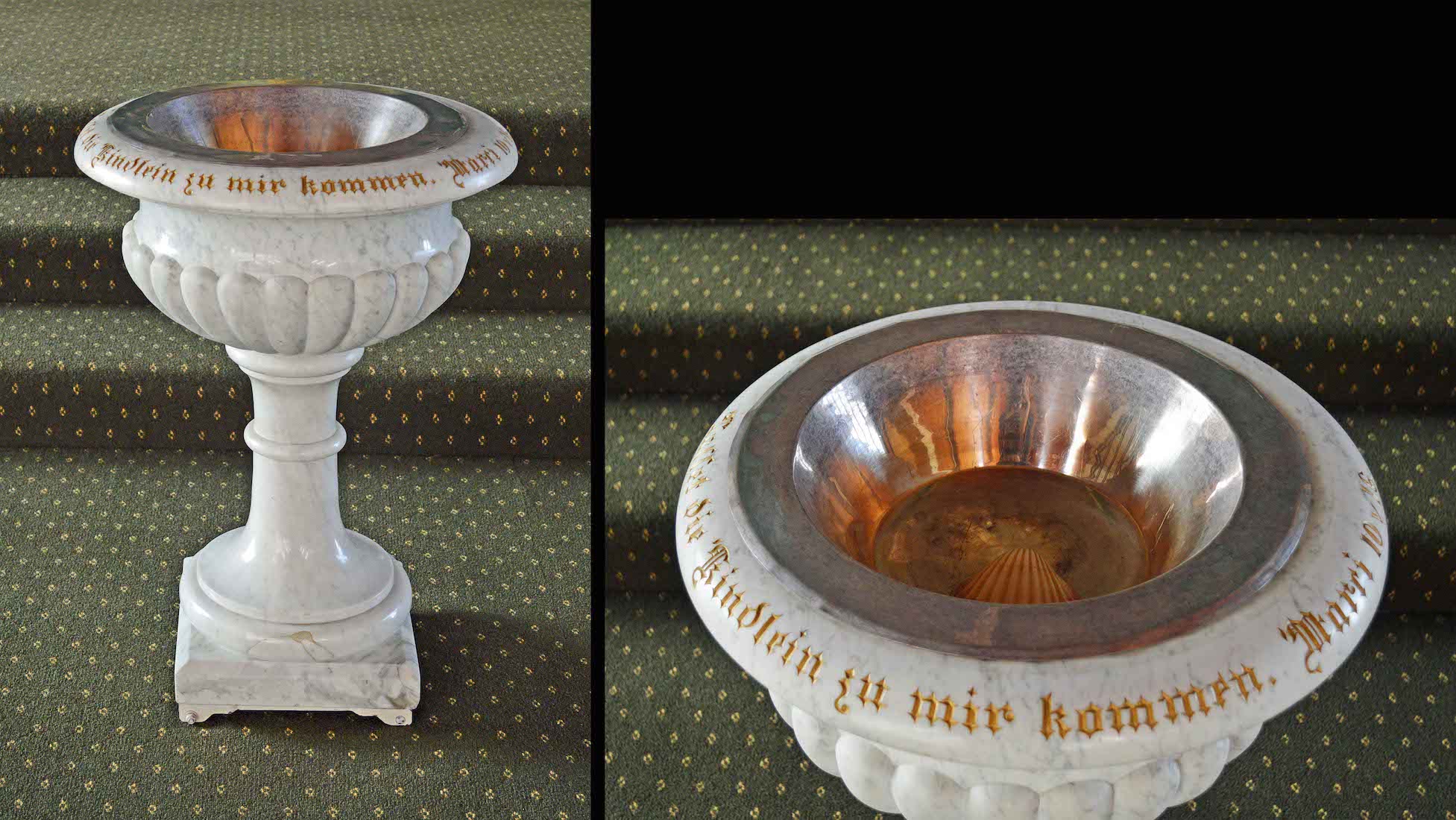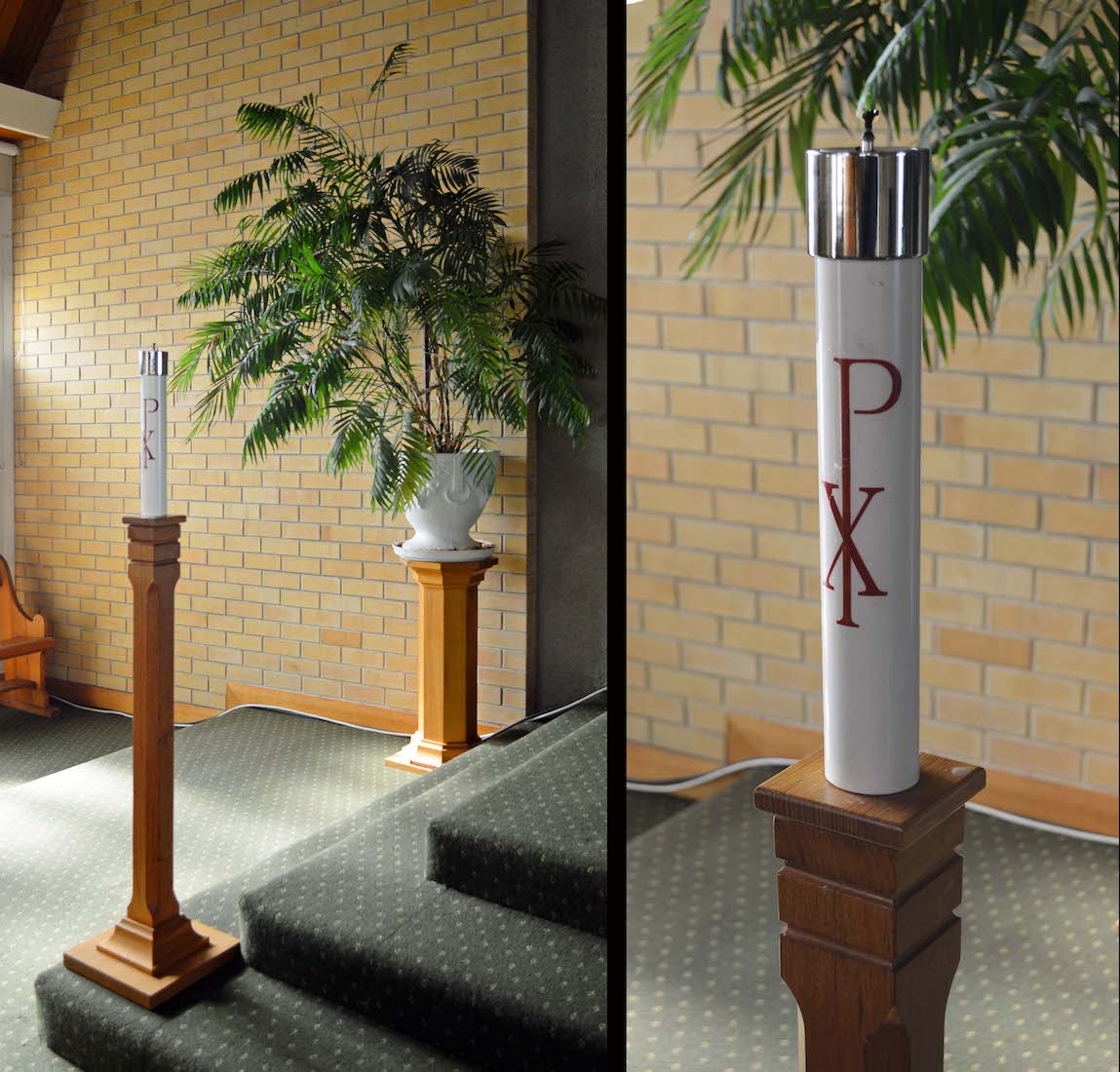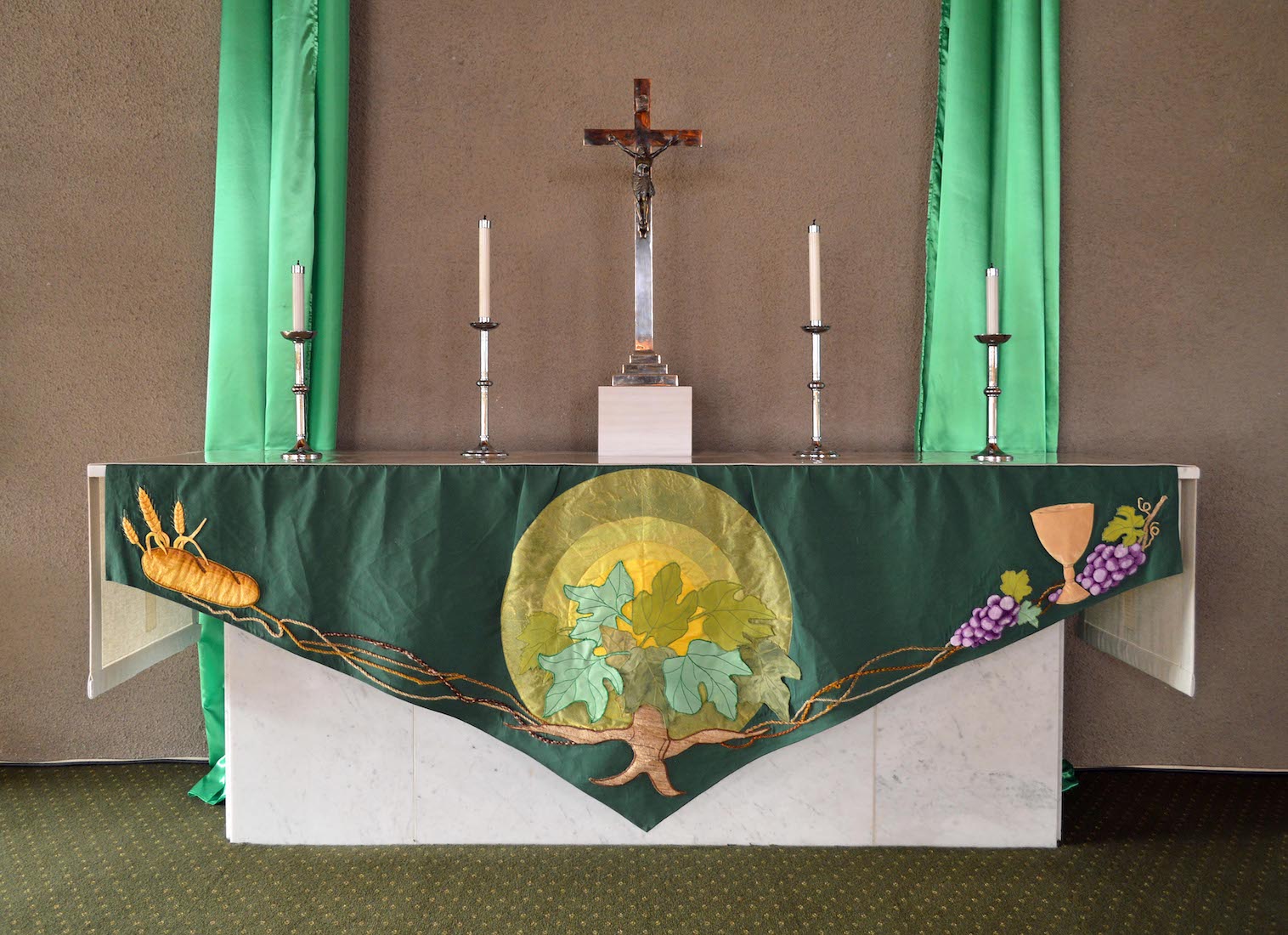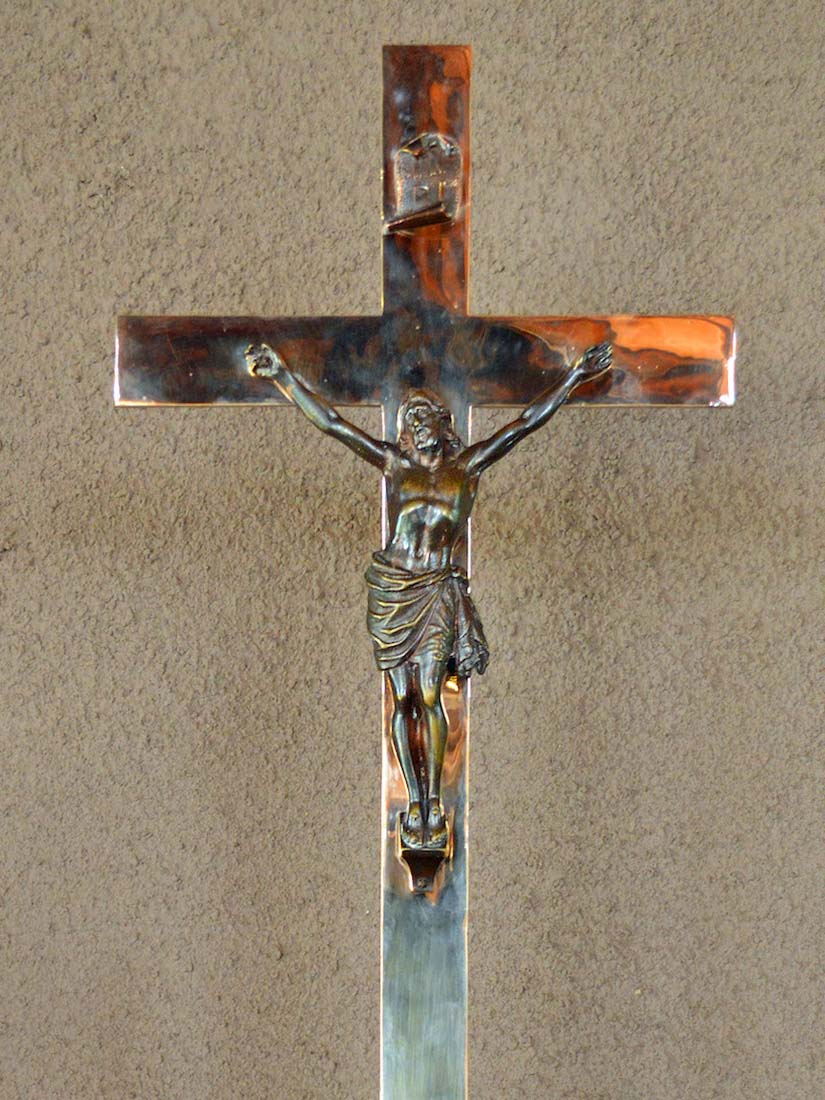22. WINDOW INSETS

The cross and crown motif at left points to the crucified and glorified Christ. The central inset shows Jesus with his sheep, and holding a lamb. The text reads: The Lord is my Shepherd. I do not know if the design at right has any significance.
23. JESUS
The name ‘Jesus’ is derived from the Hebrew name Yeshua / Y’shua, which is based on the Semitic root meaning ‘to deliver; to rescue’. The letters here have backgrounds which are open to interpretation: the J with hearts and flames, the central S with leafy symbols of life and growth, and the final S with crosses and crowns.
24. SANCTUARY
Moving to the sanctuary, we observe the pulpit at left and two banners at right. There is a projection screen and a cluster of musical equipment. And at centre is the font in front of the altar and cross. We look at some of these in more detail.
25. SOUTH SIDE BANNERS
These two banners are fairly self-explanatory. Under the heading ‘Born again’ a group of worshippers direct their praise to the Godhead – Father, Son and Holy Spirit. The banner at right is a call for the descent of the Holy Spirit, pictured as the dove of peace.
26. PULPIT
The modern pulpit stands to the left of the altar. It is from here that the Gospel message is proclaimed week by week. The colourful banner is open to interpretation: new life and growth, the Cross of Christ springing from the Root of Jesse, ... .
27. THE CROSS
The main focus of the worshipping congregation is this large Cross on the Easter wall. It is an empty Cross, emphasising that Christ is risen and alive today. Many churches have a cross at Easter time which is draped in different ways to emphasise the death and resurrection of Christ.
28. FONT
The simple white font is used for baptising children: a rite of entry into the Christian church and also into the Christian life. The words of Jesus are engraved around the rim (in German): Suffer the little children to come unto me (Mark 10:14).
29. PASCHAL CANDLE
The Paschal Candle demonstrates that Christ is the Light of the World. It is lit mainly around Easter but also on special occasions. This candle features the Chi-Rho symbol – a well known symbol for Christ.
30. ALTAR
This altar is made of Italian marble. It is from here that the Eucharist is administered: the Bread and Wine which symbolise the broken body and blood of Christ. These Elements of the Eucharist also appear in the design of the altar cloth.
31. CRUCIFIX AND CANDLES
On the altar stands a crucifix and a pair of candles. In the early church candles were used to provide light. These days they are still very commonly used: presumbaly the result of a very long and strong tradition.
32. CRUCIFIX
I have been interested to see a crucifix prominently displayed in each of the Barossa Lutheran churches I have visited. In a Protestant church one is far more likely to see an empty Cross, with the emphasis on the Risen Christ. However, even though Martin Luther initiated the Reformation, the Lutheran Church remains very much within the Anglo-Catholic tradition. This completes our tour of the St Petri Lutheran Church.

CONCLUSION
I hope you have enjoyed visiting the St Petri Lutheran Church with me. It is rather different from the ‘little Lutheran churches’ of the Barossa Valley, with the old tower here being the only obvious link to the historic past. My thanks to the Church Office staff who were happy to open the Church up for me.
I am very happy to receive any corrections or constructive comments about this site: the best websites are those which have no errors! As always, I am grateful to my wife Margie who came with me and who has done much valuable proof reading.
St Petri Church has a website address with link:
The photos on this site are all mine, and can also be found in higher resolution at:
https://www.flickr.com/photos/paulscottinfo/albums/
Site created: 08 / 2020
Paul Scott

